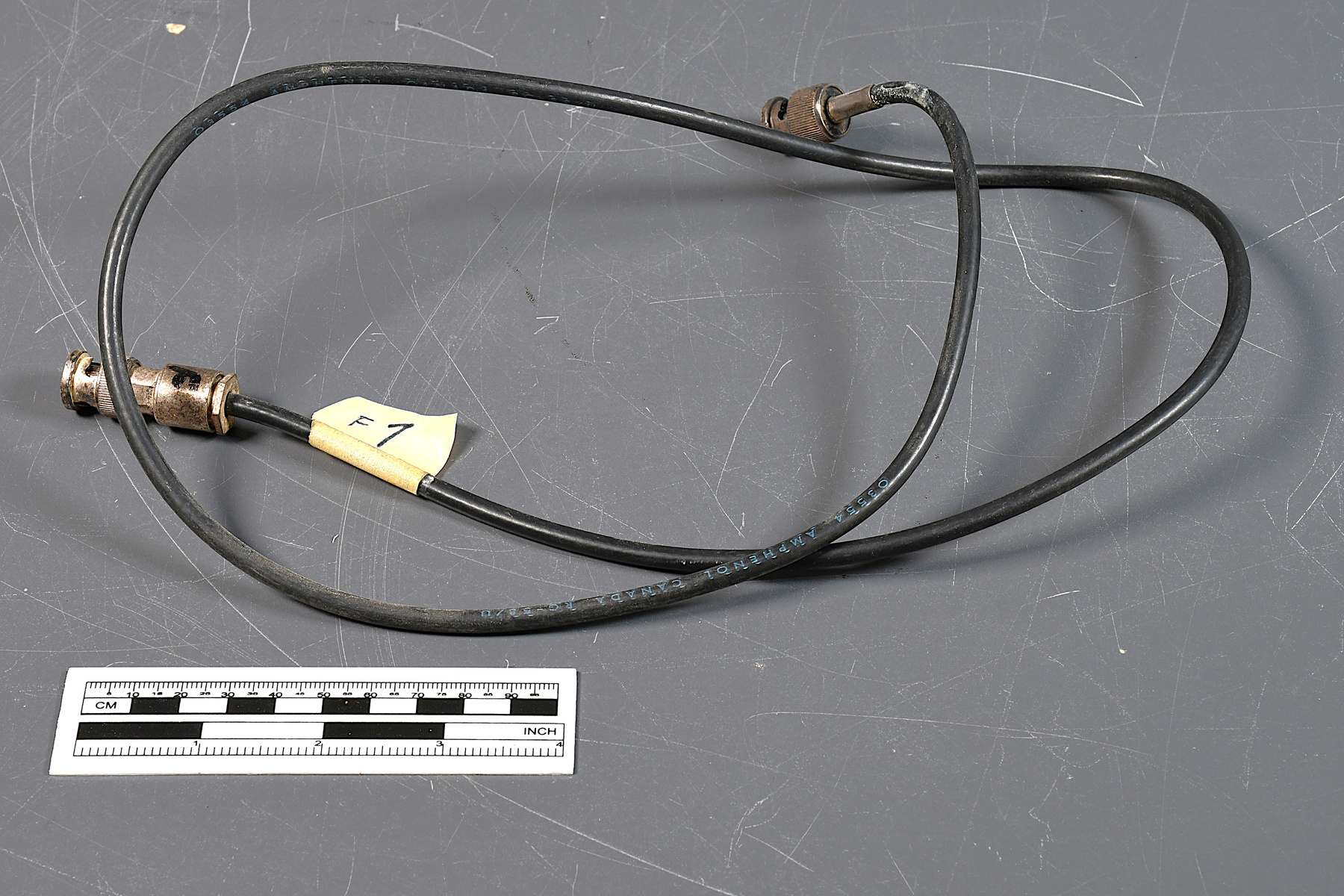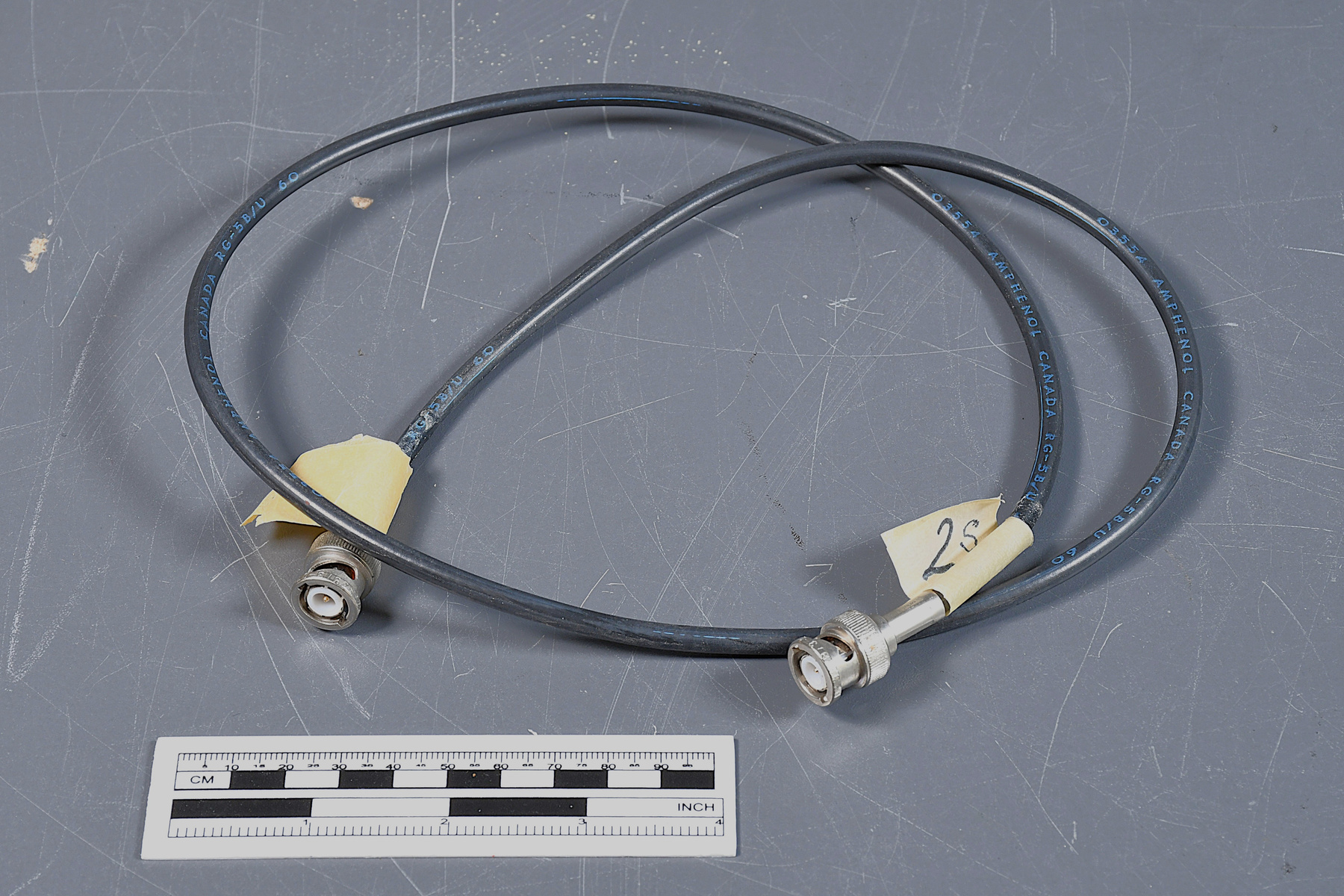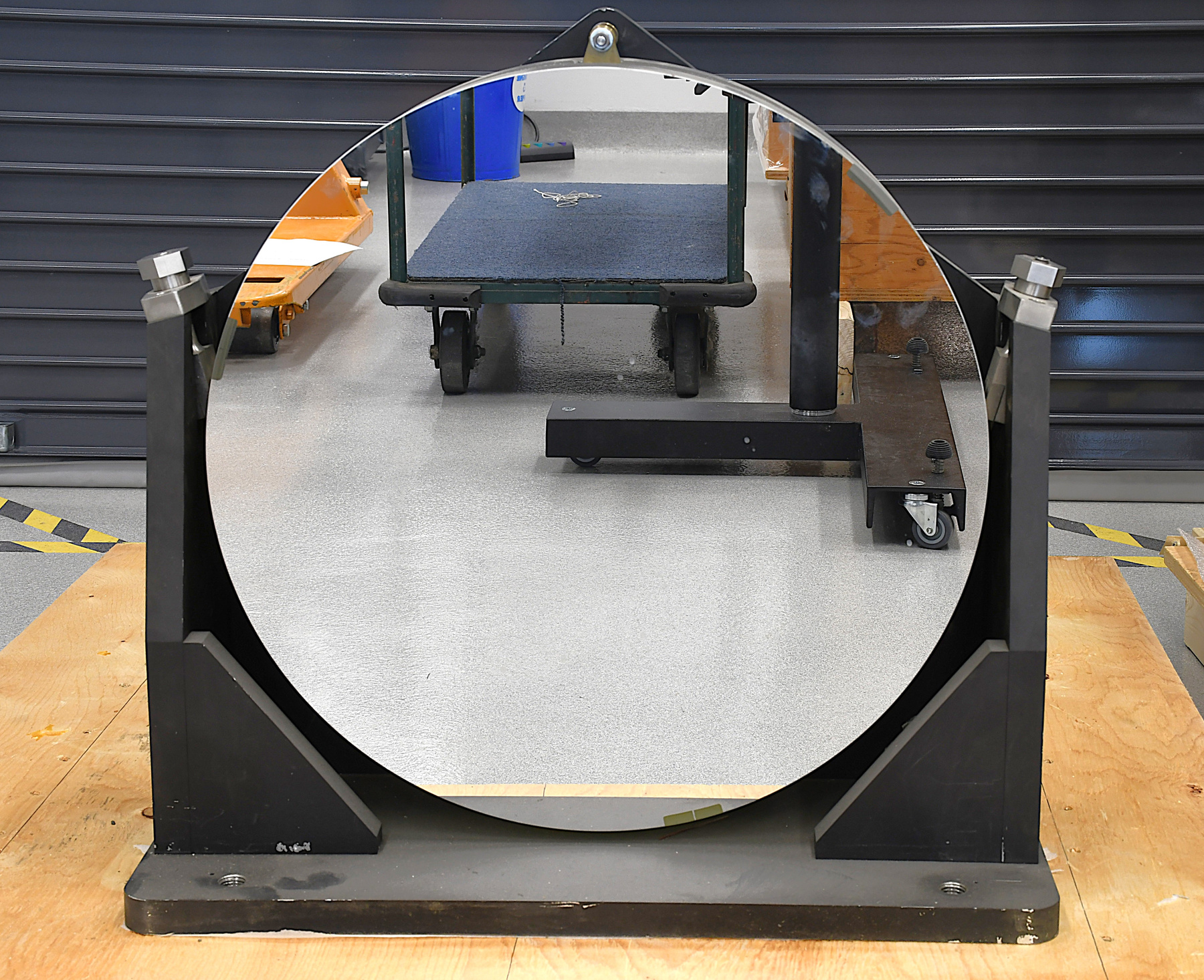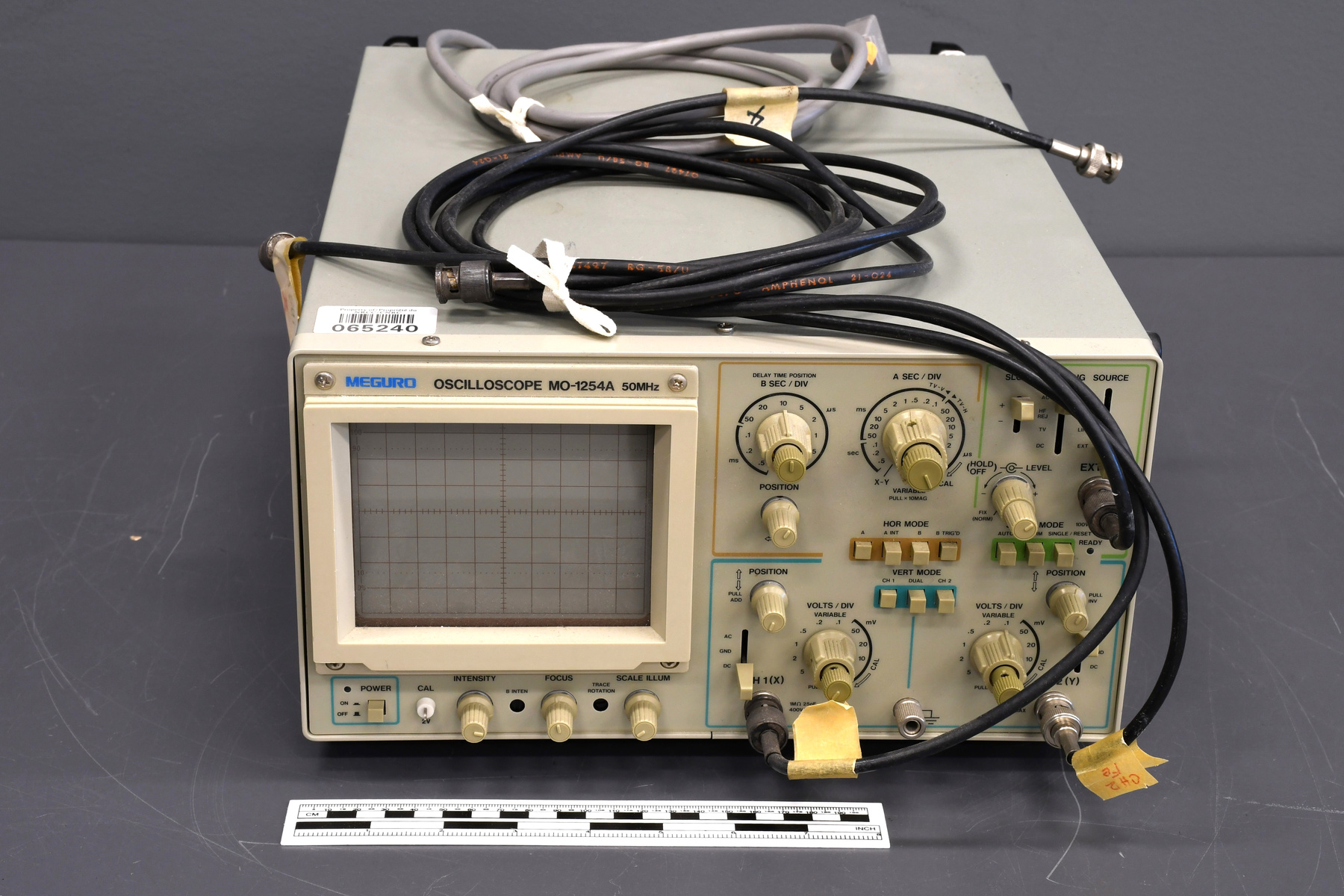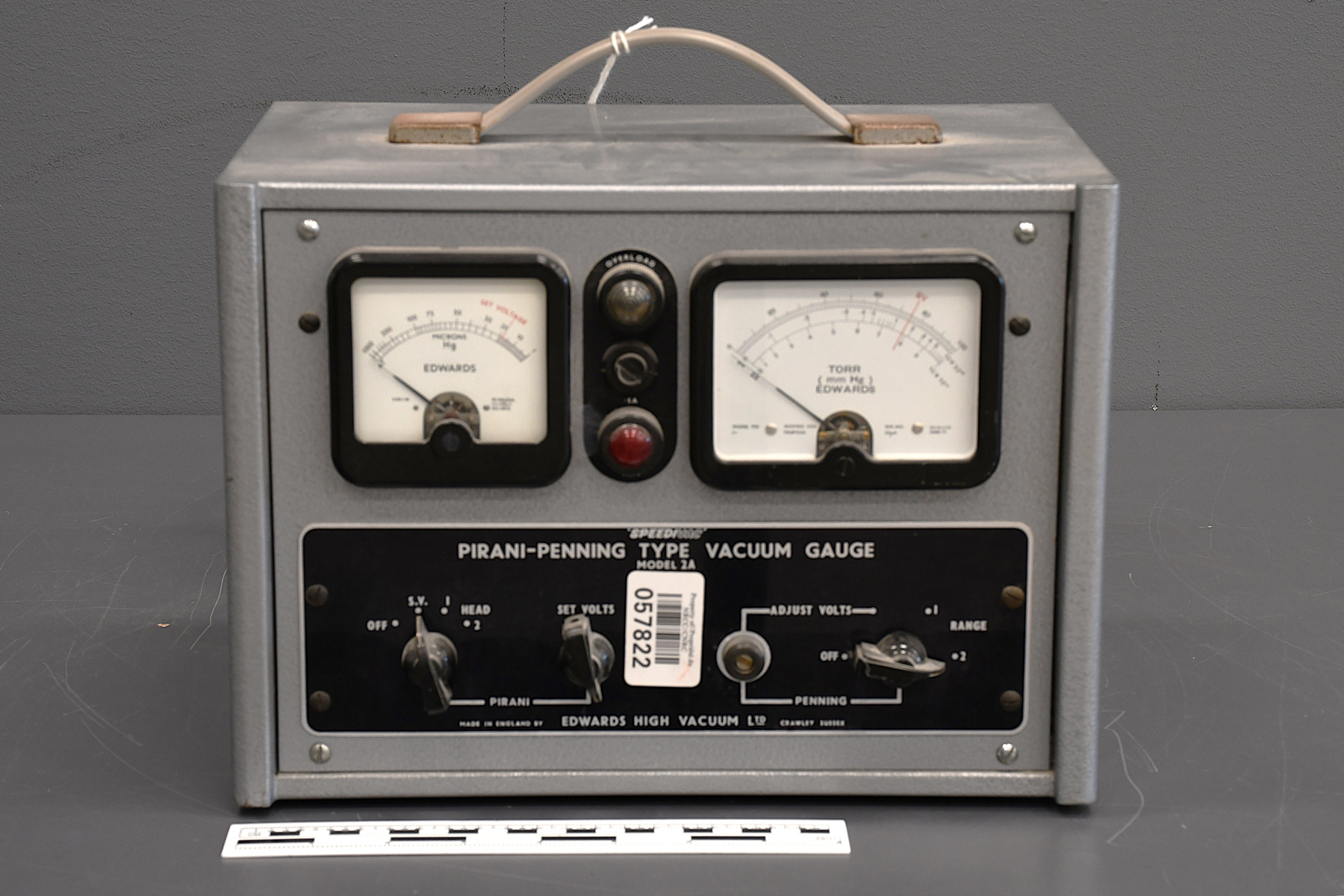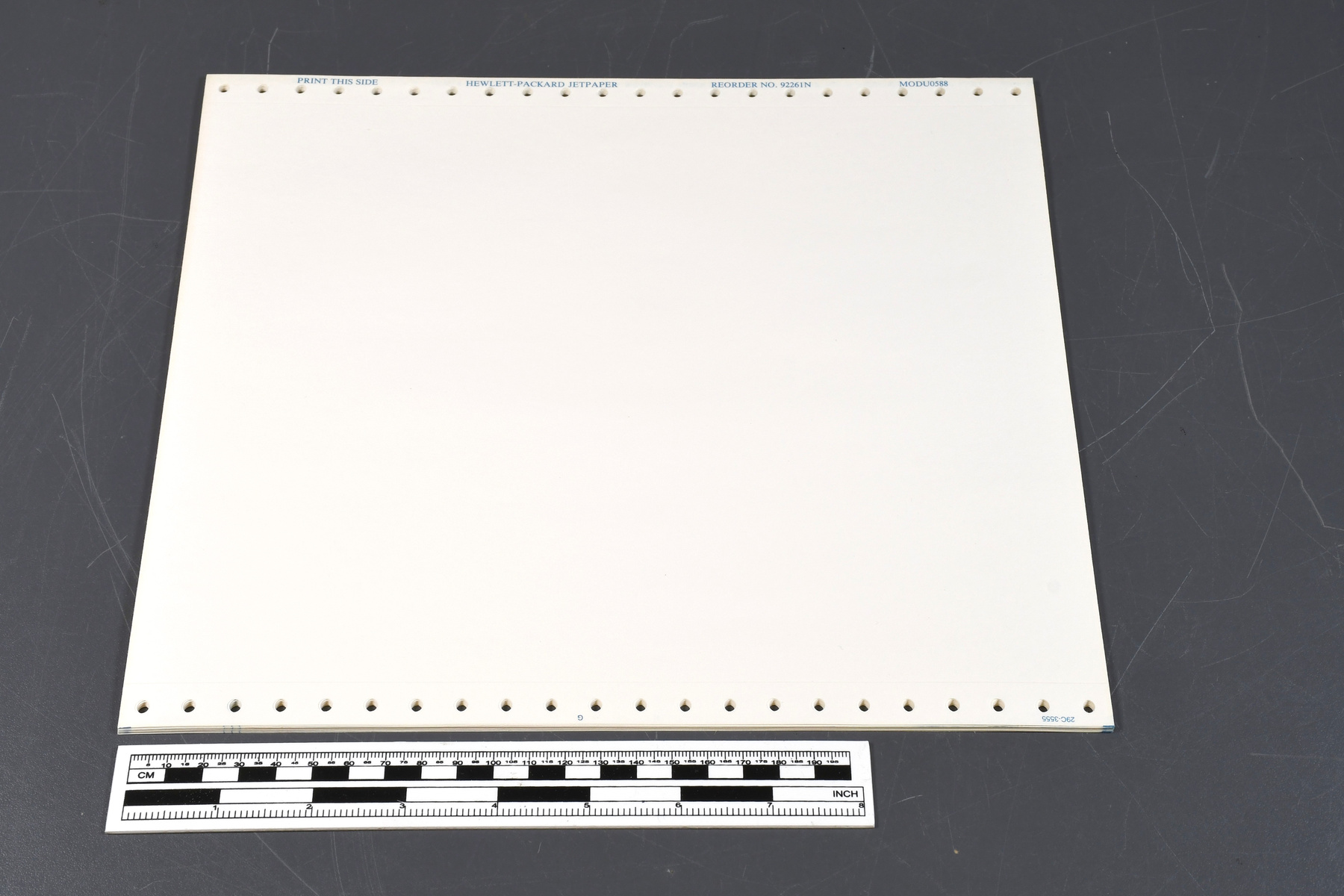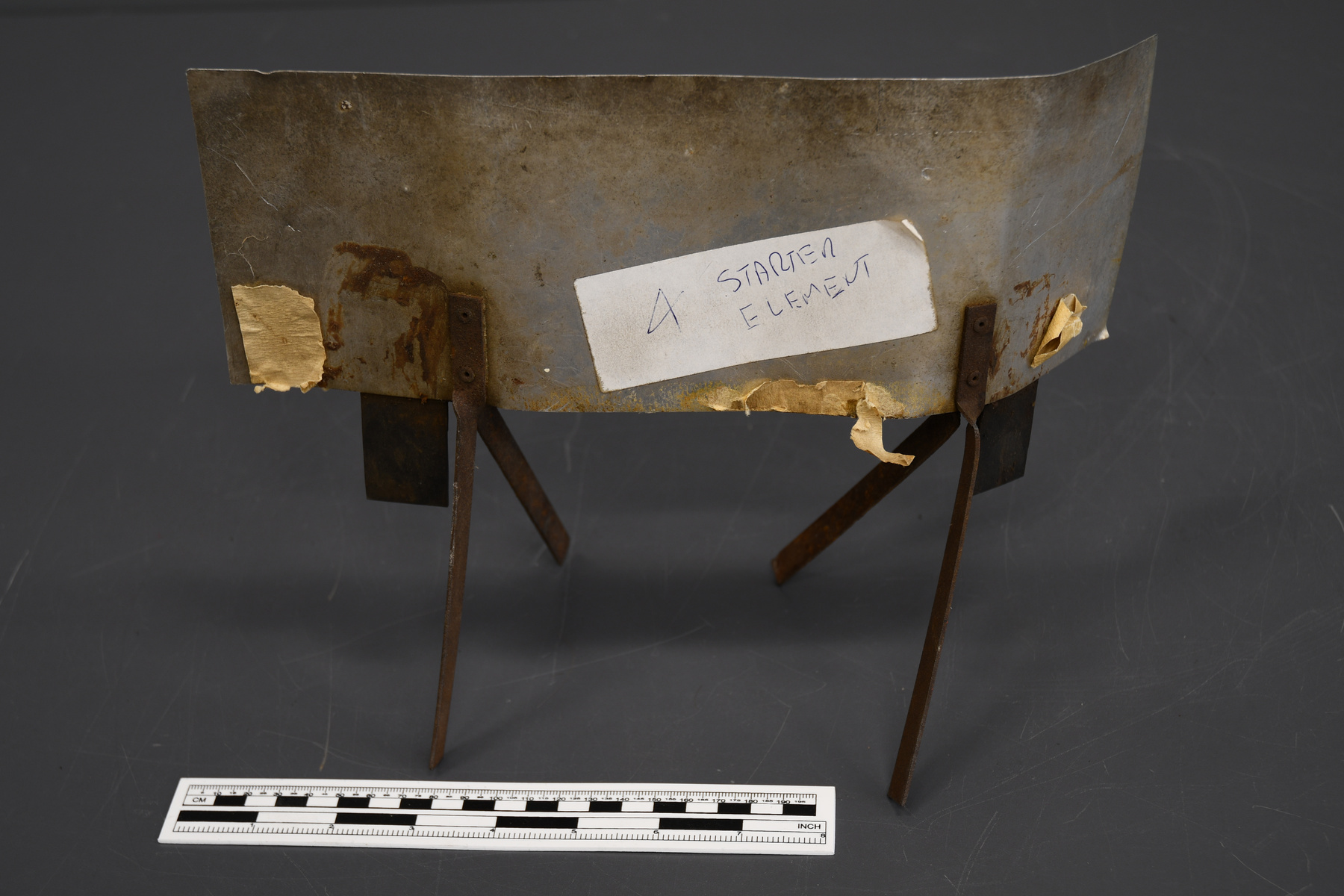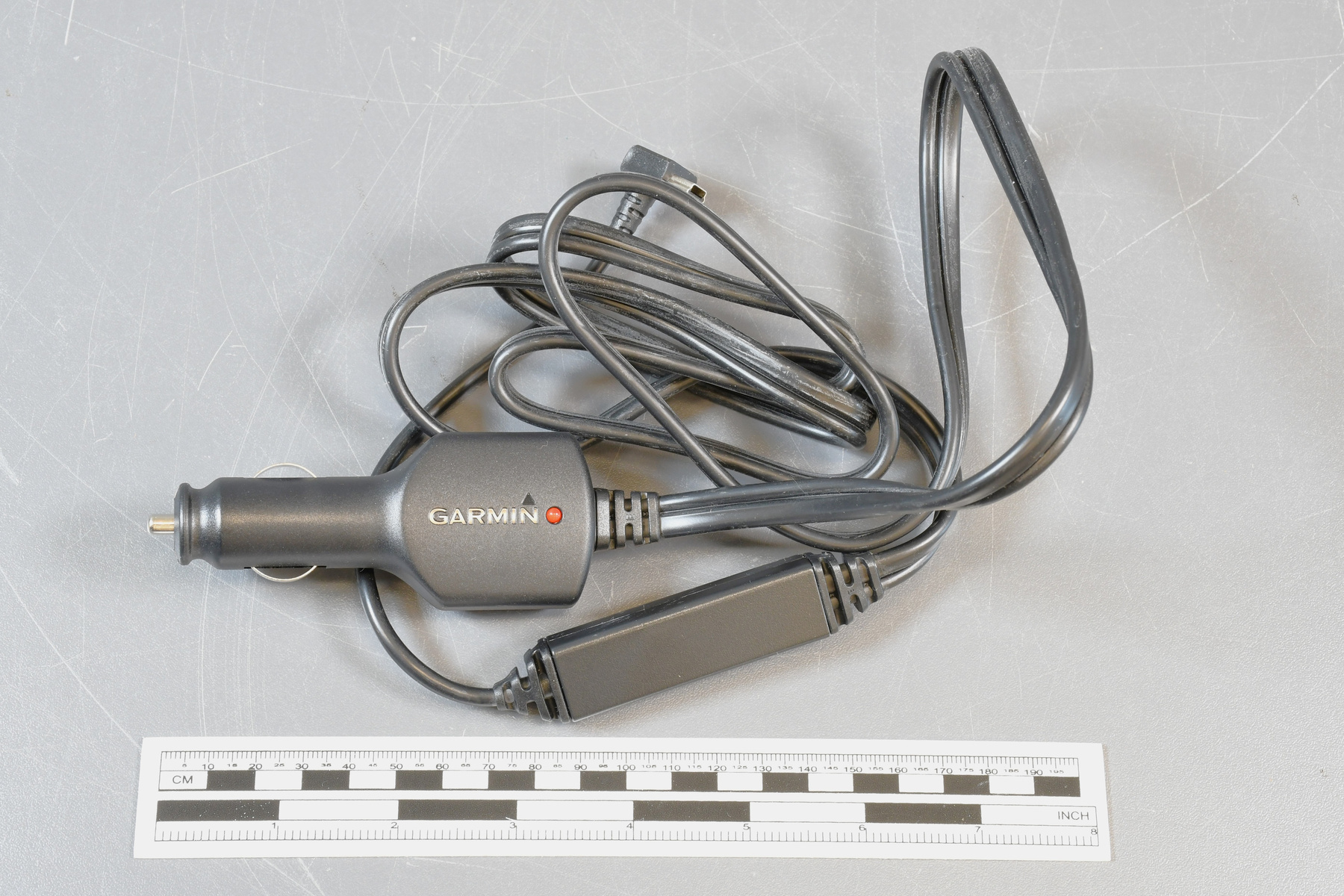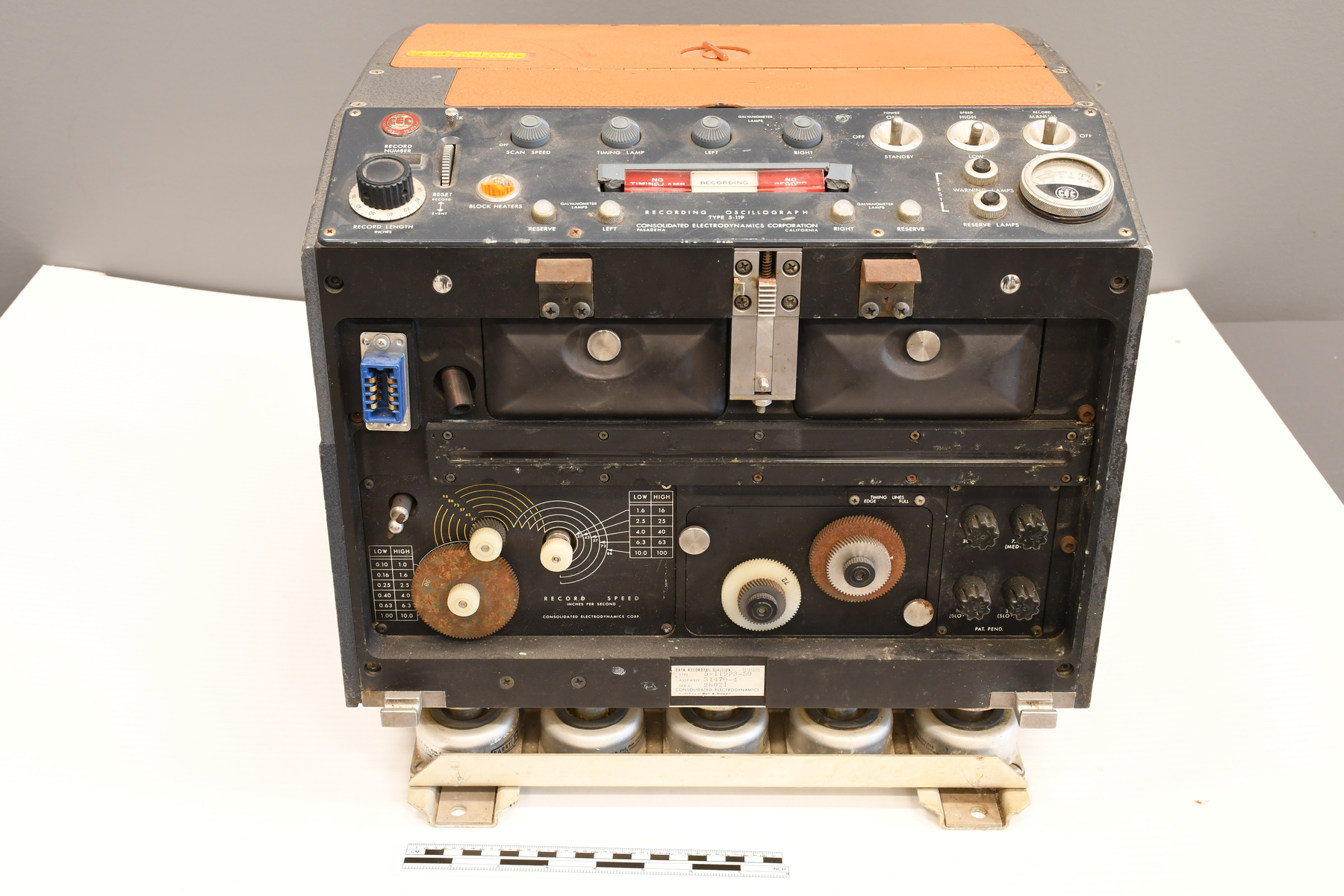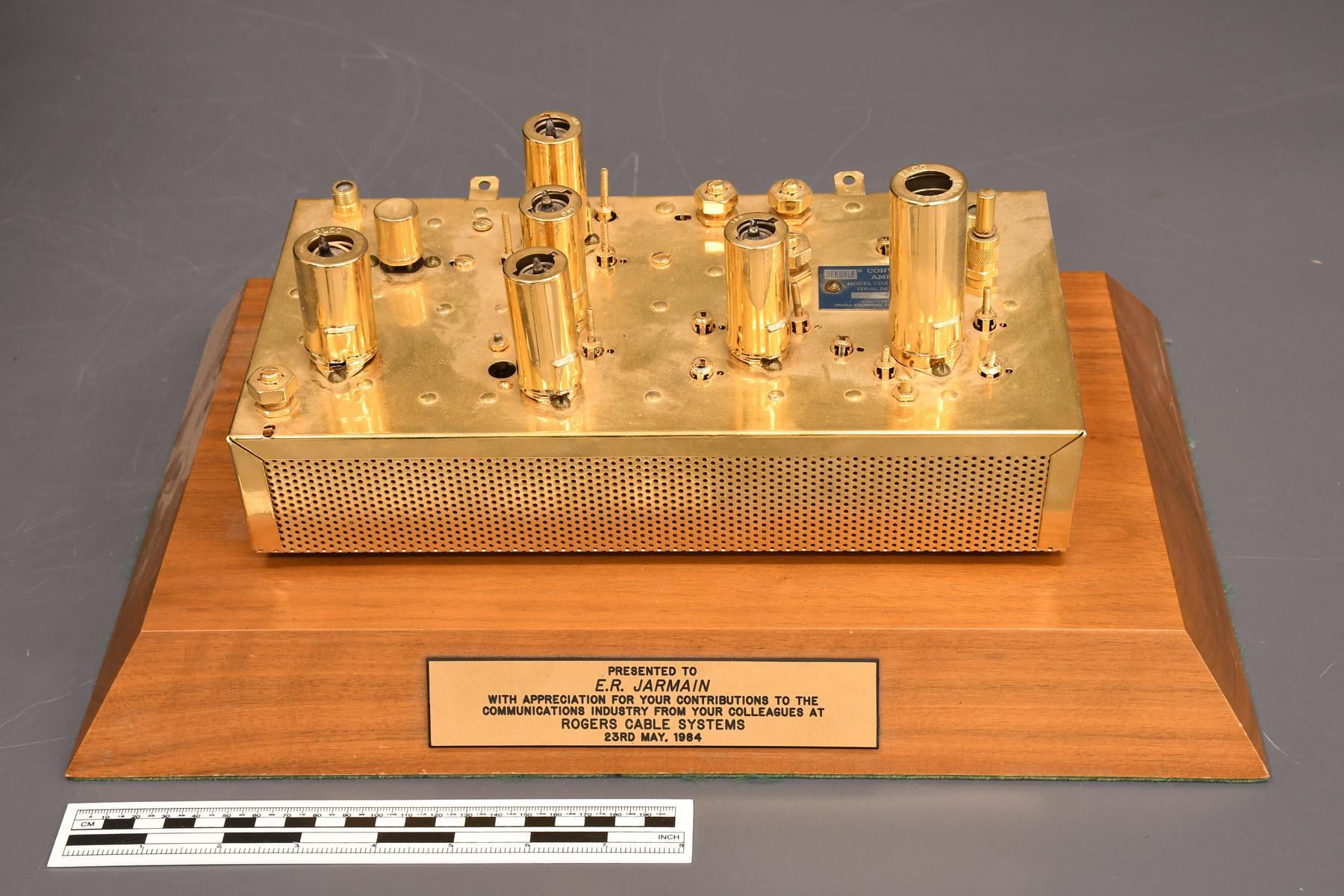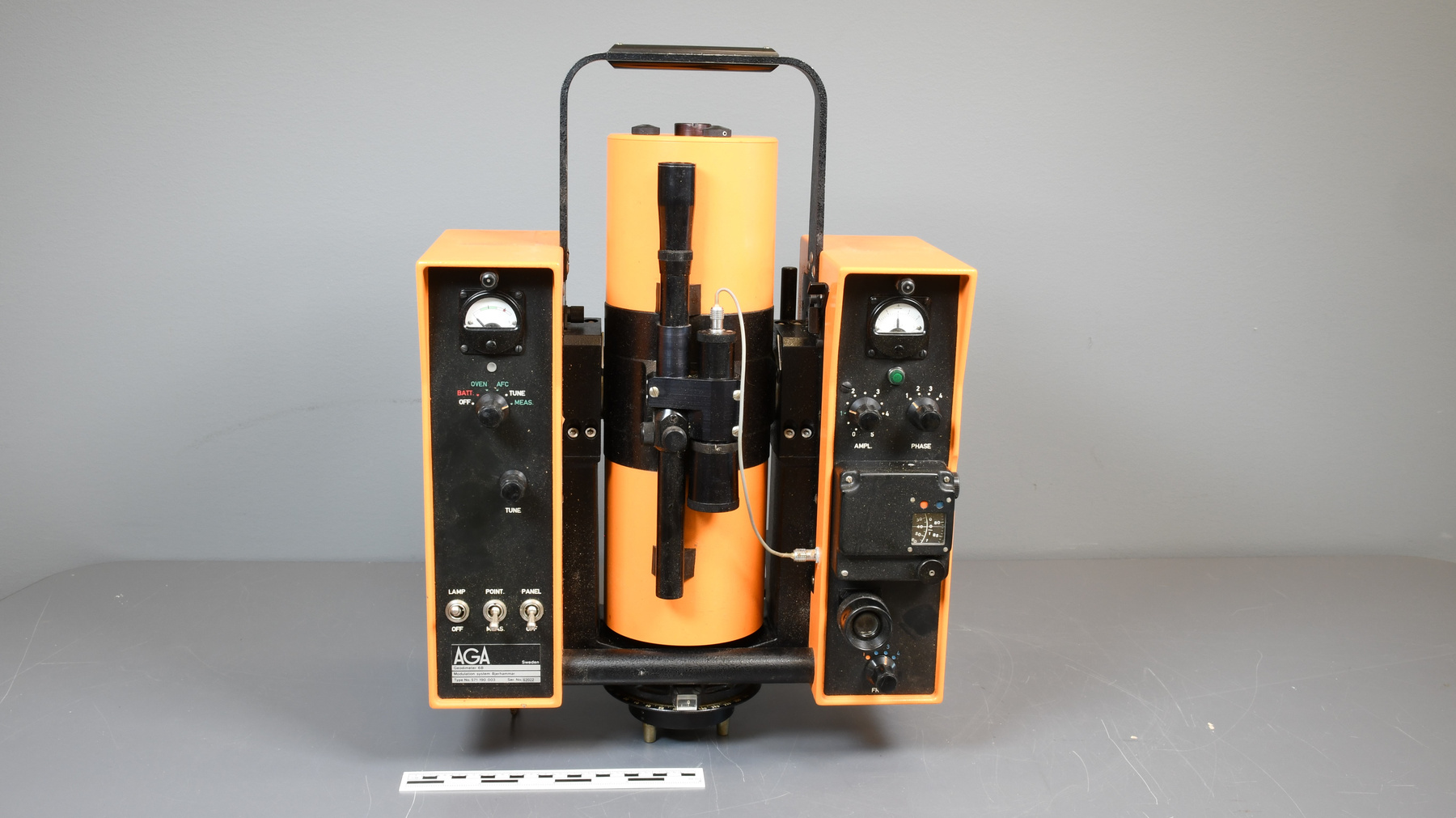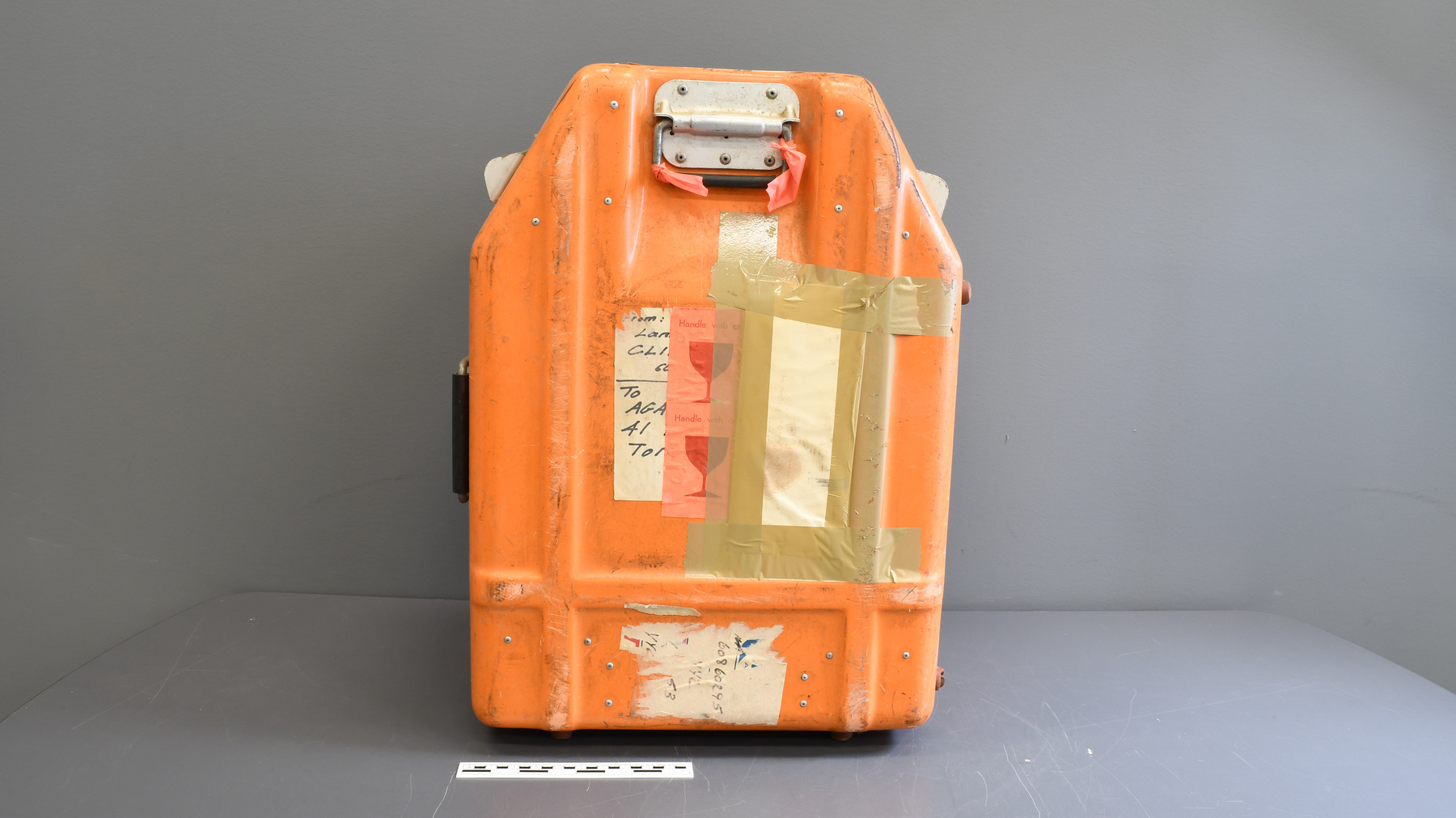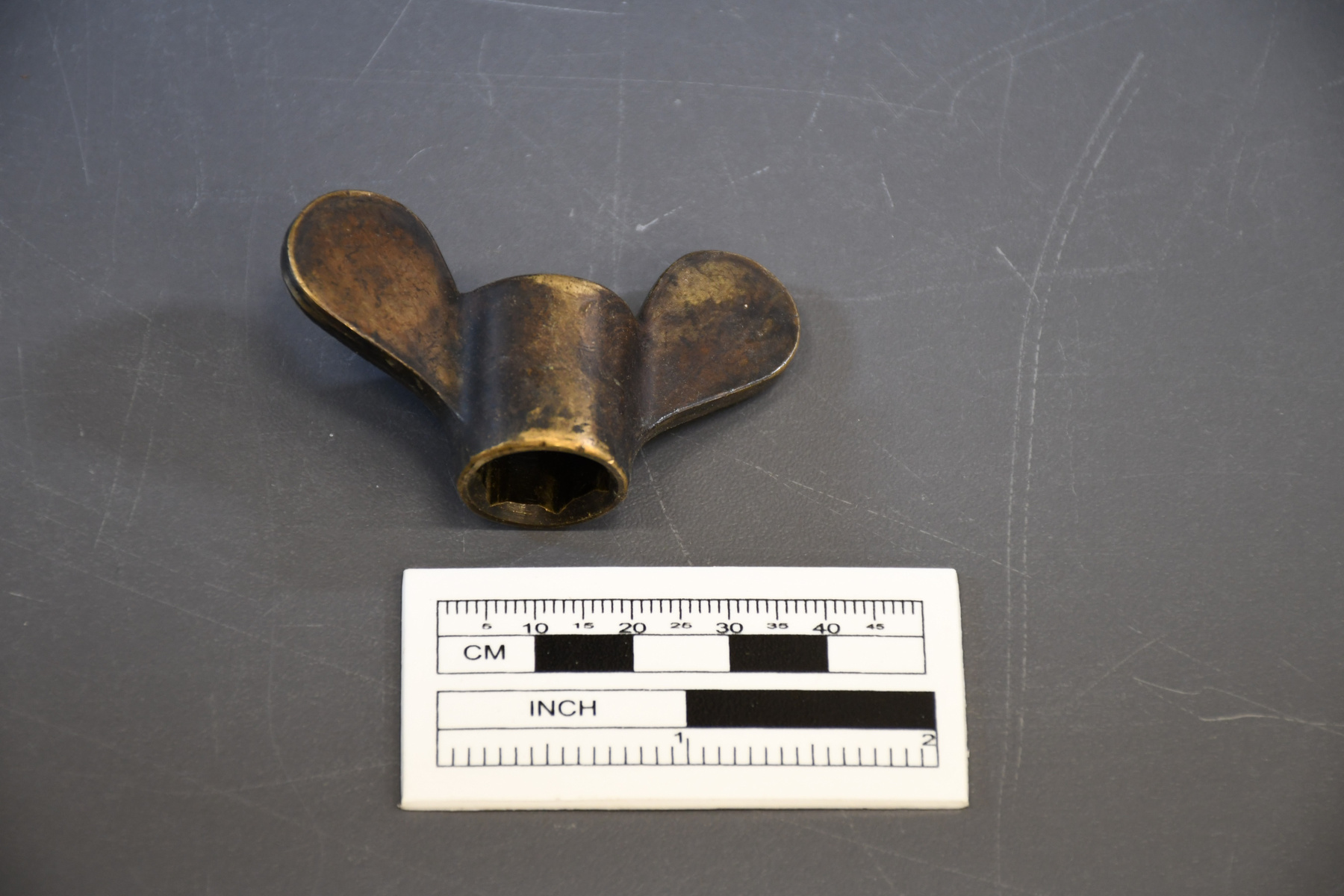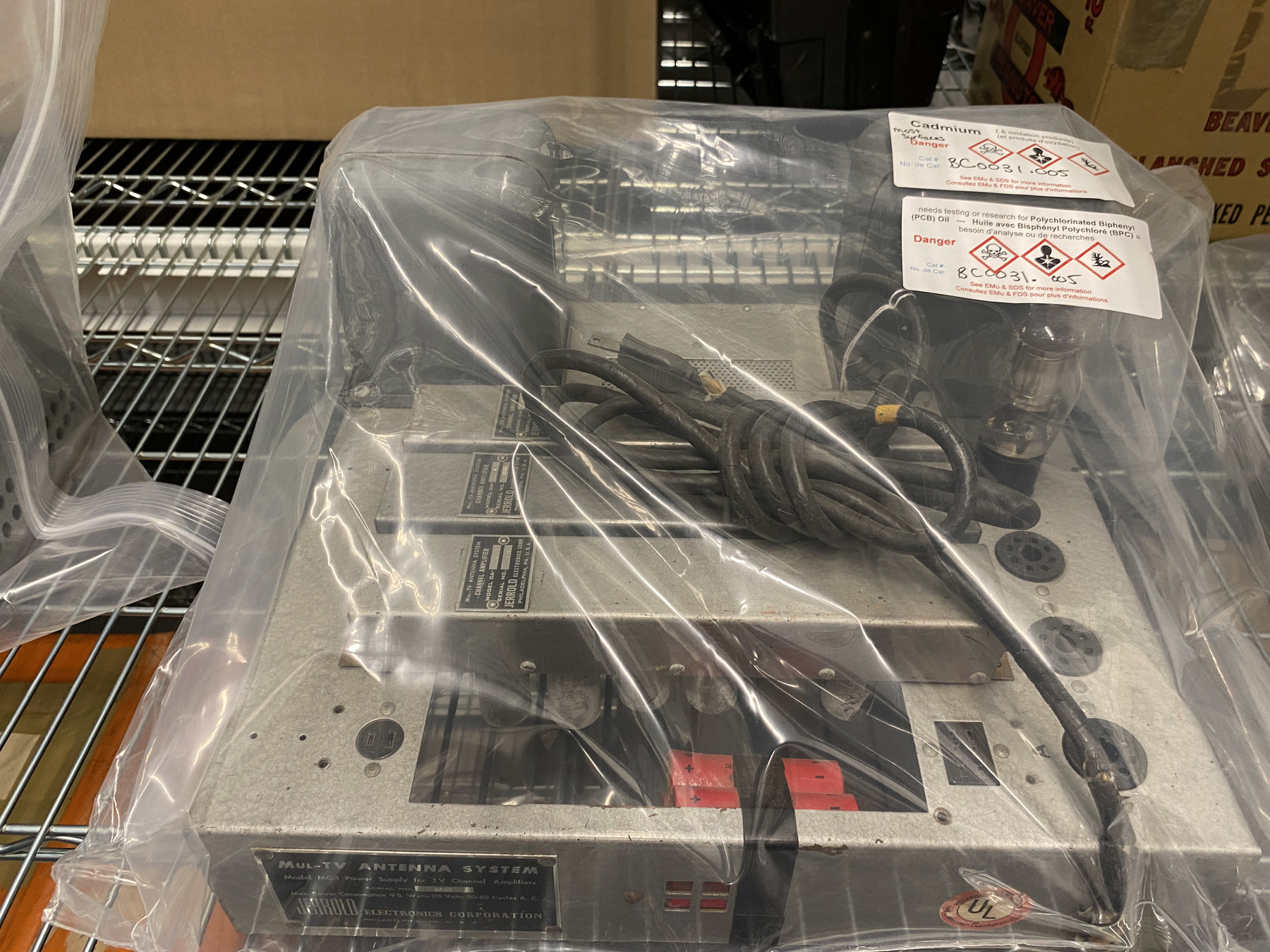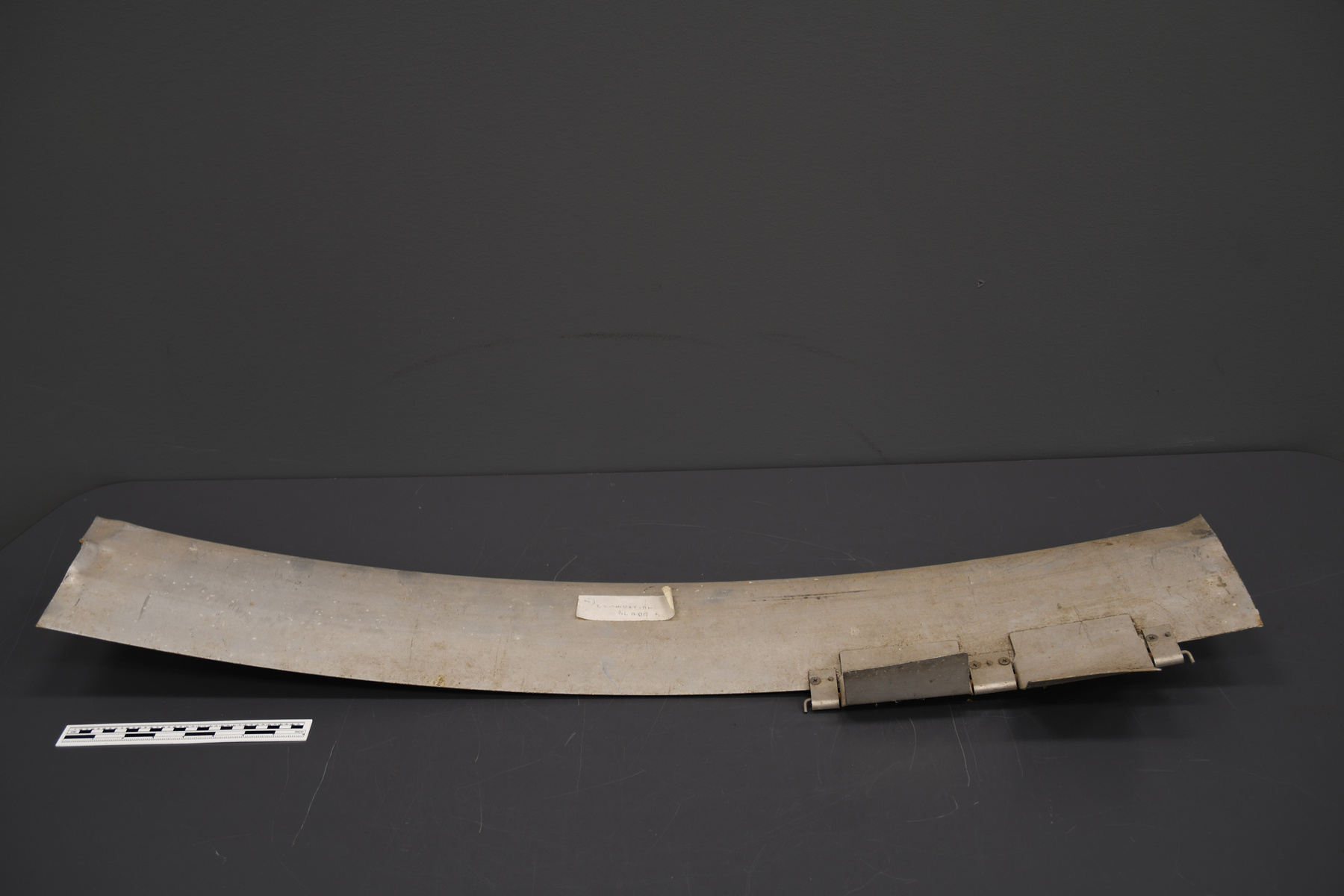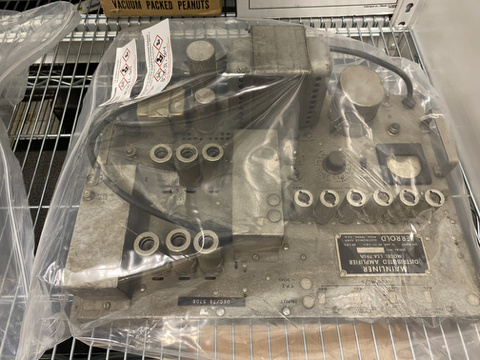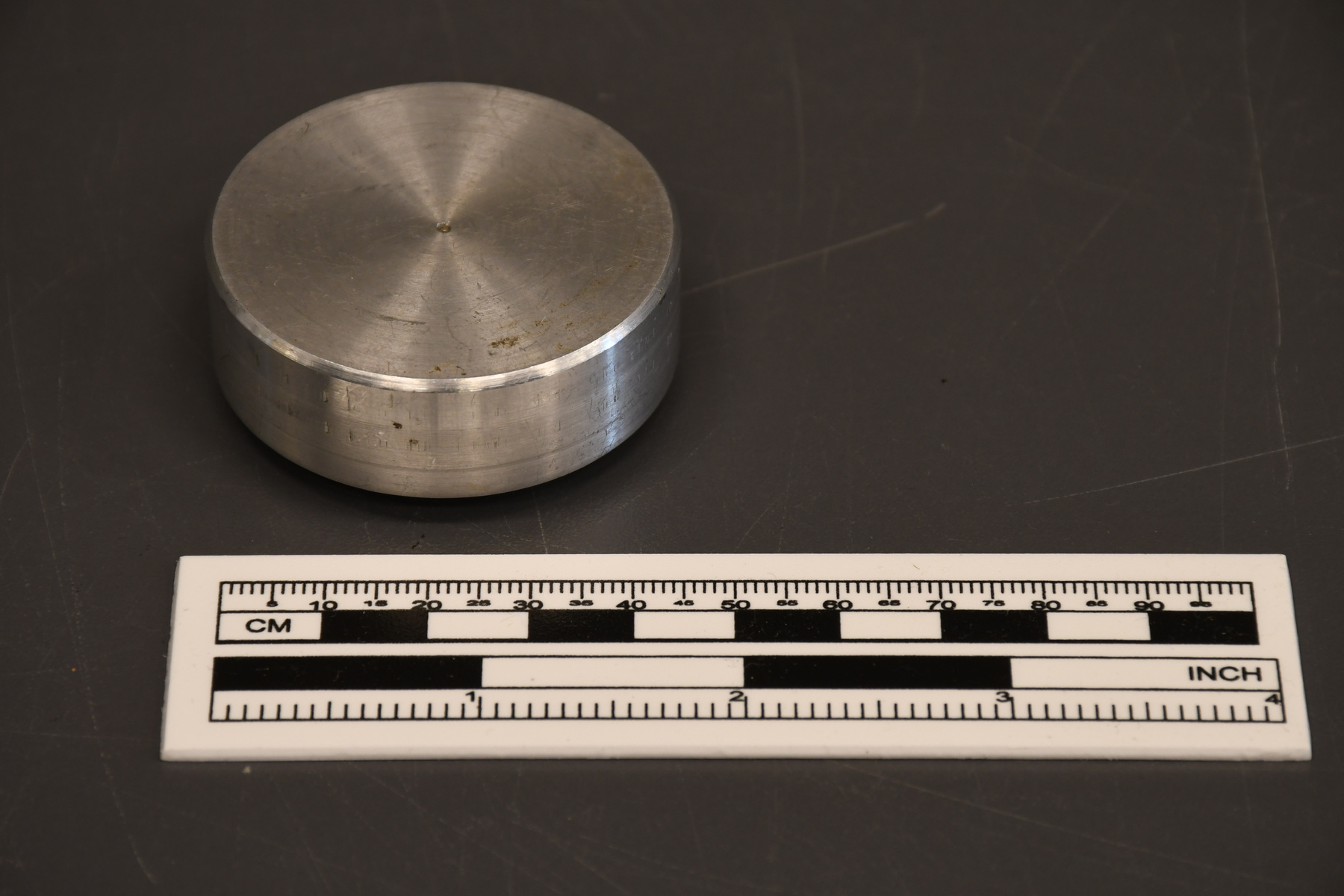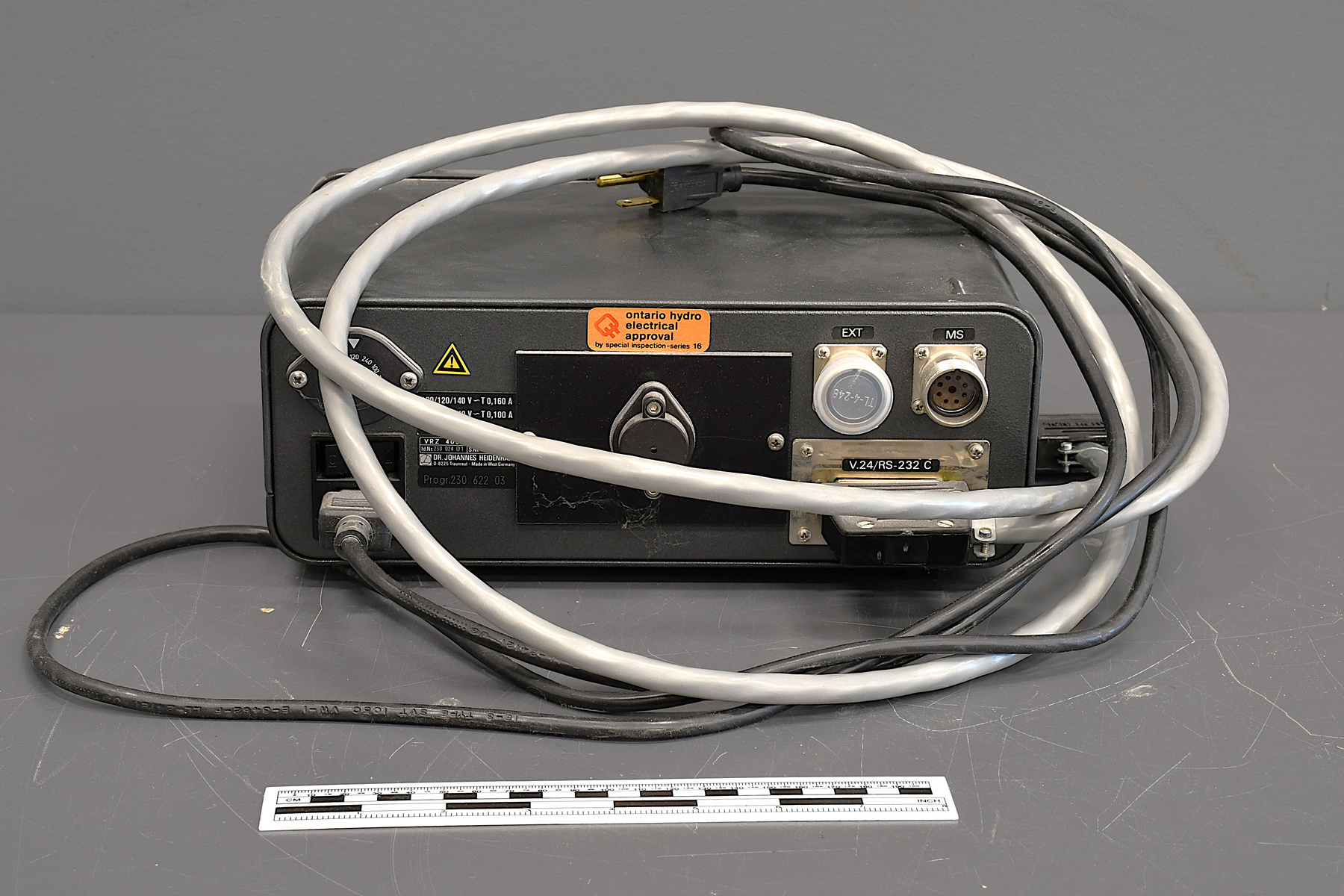Counter
Use this image
Can I reuse this image without permission? Yes
Object images on the Ingenium Collection’s portal have the following Creative Commons license:
Copyright Ingenium / CC BY-NC-ND (Attribution-NonCommercial 4.0 International (CC BY-NC 4.0)
ATTRIBUTE THIS IMAGE
Ingenium,
2008.1878.001
Permalink:
Ingenium is releasing this image under the Creative Commons licensing framework, and encourages downloading and reuse for non-commercial purposes. Please acknowledge Ingenium and cite the artifact number.
DOWNLOAD IMAGEPURCHASE THIS IMAGE
This image is free for non-commercial use.
For commercial use, please consult our Reproduction Fees and contact us to purchase the image.
- OBJECT TYPE
- spectrograph/optical comparator
- DATE
- 1987
- ARTIFACT NUMBER
- 2008.1878.001
- MANUFACTURER
- Heidenhain, Johannes
- MODEL
- Unknown
- LOCATION
- Traunreut, Germany
More Information
General Information
- Serial #
- 1866194 B
- Part Number
- 1
- Total Parts
- 3
- AKA
- metro counter/Digital read out unit
- Patents
- N/A
- General Description
- An artifact made of metal and synthetic material/Un objet fait avec du matériel en métal et des composantes synthétiques.
Dimensions
Note: These reflect the general size for storage and are not necessarily representative of the object's true dimensions.
- Length
- 20.1 cm
- Width
- 27.5 cm
- Height
- 10.9 cm
- Thickness
- N/A
- Weight
- N/A
- Diameter
- N/A
- Volume
- N/A
Lexicon
- Group
- Physics
- Category
- Electricity
- Sub-Category
- N/A
Manufacturer
- AKA
- Heidenhain
- Country
- Germany
- State/Province
- Unknown
- City
- Traunreut
Context
- Country
- Canada
- State/Province
- Ontario
- Period
- 1967-1990s
- Canada
-
The vacuum Ebert spectrograph, developed by Donald A. Ramsey at the NRC, was a central instrument in Canada’s contributions to spectroscopy from approximately 1950 to the 1990s. Lead by Nobel Laureate, Gerhard Herzberg, Canada was a leader in this part of physics in the post WWII era. Using this device, D.A. Ramsey and Barry Lutz were able to confirm that the Kuiper bands of Uranus were made of methane. This finding had eluded scientists since the early days of astrophysics. Ramsey, a gifted experimenter, was able to produce this extremely high-resolution spectrograph, in order to determine the origins of the bands in the laboratory. The laboratory findings were compared with Lutz’s observations and measurements of the Uranus bands. The measurements were based on observations taken at the Mount Hamilton Station of the Lick Observatory, California. Le spectrographe Ebert avec une pression à vide était conçu au NRC par Donald A. Ramsey. L'instrument était primordial pour que le Canada puisse contribuer au domaine de spectroscopie pour plus de quarante ans entre 1950 et les années 1990s. La recherche était menée par Gerhard Herzberg qui était un lauréat pour le prix Nobel. Canada est rapidement devenu le meneur dans ce domaine de la physique après la deuxième Guerre Mondial avec Herzberg en charge. M. Ramsey et Barry Lutz ont réussit à confirmer que les bandes Kuipers de l'Uranus sont faits en méthane en utilisant cette machine. La découverte échappait aux scientifiques depuis l'enfance de l'astrophysique. Ramsey était capable de produire ce spectrographe à haute résolution pour déterminer l'origine des bandes au laboratoire. Le scientifique a pu comparer ces résultats avec ceux de Lutz. Les deux séries de mesurément étaient pris à la station de Mont Hamilton a l'observatoire Lick en Californie. - Function
-
This digital read out was possibly responsible for showcasing various sets of data collected by the Ebert Spectrograph. Cet appareil de lecture numérique était responsable de démontrer les données accumulées par le spectrographe Ebert. - Technical
-
This type of spectrograph dates back to the work of Hermann Ebert in 1889. He developed a spectrometer that consisted of an entrance slit, a single concave spherical mirror, a diffraction grating, and a small photographic plate in the plane of the entrance slit. This artifact is a Ramsey spectrograph, a 33-meter multiple-path cell, that produced spectra of the highest resolution at the time. The main body of this spectrograph was made by Fleck Industries before being installed at the NRC. Despite difficult struggles with leaks in the early construction phase of the optical components, large leak detectors (as big as fridges at the time) were installed and used to locate and fix the leaks. The resultant vacuum conditions allowed for much longer exposures and more precise images. This instrument was also a success due to its optics. The initial resolution of the instrument was not as good as expected, and a new mirror had to be ground and installed. The resolution improved significantly. There were also two gratings in this model, one high and the other low resolution. Ce genre de spectrographe est inspiré par le travail de Hermann Ebert en 1889. Il a développé un spectromètre qui possédait une fente d'entrée, un miroir concave et sphérique, un réseau de diffraction et une plaque photographique située sur le plan de la fente d'entrée. Cet artefact est un spectrographe Ramsey qui possède un trajet-multiple de plus de trente-trois mètres qui produisaient une résolution de la plus haute qualité de sa génération. Le corps du spectrographe était fabriqué par Fleck Industries. Malgré les fuites au début de la phase de construction des composantes optiques, l'installation des détecteurs de fuites installer par la suite ont réussi à trouver et arrêter le déluge. Les conditions après l'installation a construit des conditions de pression à vide qui permettait à la machine de développer des images plus précises avec une exposition prolongée. L'instrument était aussi favori grâce à ces composantes optiques. La résolution initiale n'était pas une haute gamme et donc un nouveau miroir a dû être dépoli et installer. Ceci a augmenté la résolution a un niveau requis. Il y avait aussi deux genres de réseau qui accompagnaient ce modèle qui permettait à une résolution base ou celui qui apportait une résolution plus augmentée. - Area Notes
-
Unknown
Details
- Markings
- On the front of the object/Sur le devant de l'objet: "ENT,7,8,9/START,4,5,6/REF/1,2,3/CE,0,[.],[+/-],HEIDENHAIN",The markings on the back of the artifact read in part/Les marques sur le dos de l'artefact lit en partie:[140-220], EXT, MS/V.24/RS-232 C", On the sticker on the back of the artifact/Sur l'autocollant sur le dos de l'artefact:"100/120/140 V T0,160A/200/220/240 C TO 100A/50/60Hz", On the manufacturing plate on the back of the artifact/Sur la plaque du fabricateur sur le dos de l'artefact: "VRZ 403, GB/Id.Nr.230 02401, S.Nr.1866194 B/DR.JOHANNES HEIDENHAIN/D-8225 Traunreut - Made in West Germany/Prog.230 622 03".
- Missing
- One plastic cap that covers the cable port on the back of the object/Y manque capuchon fait en plastique pour la prise de câble à l'arrière de l'objet.
- Finish
- A box that is rectangular in shape and made of a black coloured metal. It has a synthetic screen on its front along with sixteen synthetic buttons that have black lettering. A leg made of a silver coloured metal can extend from the base of the artifact to lift it at an angle. The back of the artifact has a black sticker that sits above a manufacturing label. Both the sticker and the label have white lettering on them. The back of the artifact has two circular threaded holes on its proper right side in order to connect to cables. Below them sits another rectangular slot for a different type of cable that has two rows of pins. This port could possibly be for a cable to link it to a computer. Lastly, the bottom corner of the proper left side has a black coloured synthetic switch along with a hole to accommodate a power cable with a wall plug. Une boite fait en forme rectangulaire avec un métal de couleur noir. Le devant de l'artefact à un écran synthétique qui est transparente ainsi que seize boutons faits de la même couleur et matériel. Les boutons possèdent du lettrage blanc. Un support fait en métal de couleur argent peut déplier en dessous de l'objet pour le tenir à un angle. Le dos de l'objet à une étiquette du fabricateur ainsi qu'une autre étiquette. Les deux sont un en dessous de l'autre et démontre un lettrage blanc. Le dos de l'objet a aussi deux trous circulaires qui sont filetés pour accueillir deux câbles sur le bon côté droit. Une prise est visible en dessous des deux autres qui est en forme rectangulaire. Il est fait pour accepter plusieurs tiges en métal. La prise est possiblement pour brancher l'objet a un ordinateur. Le bon côté gauche a un interrupteur de couleur noire fait en matériel synthétique. Il a aussi trois tiges en métal pour accepter un câble qui est pour une prise murale.
- Decoration
- N/A
CITE THIS OBJECT
If you choose to share our information about this collection object, please cite:
Heidenhain, Johannes, Counter, circa 1987, Artifact no. 2008.1878, Ingenium – Canada’s Museums of Science and Innovation, http://collection.ingeniumcanada.org/en/id/2008.1878.001/
FEEDBACK
Submit a question or comment about this artifact.
More Like This








